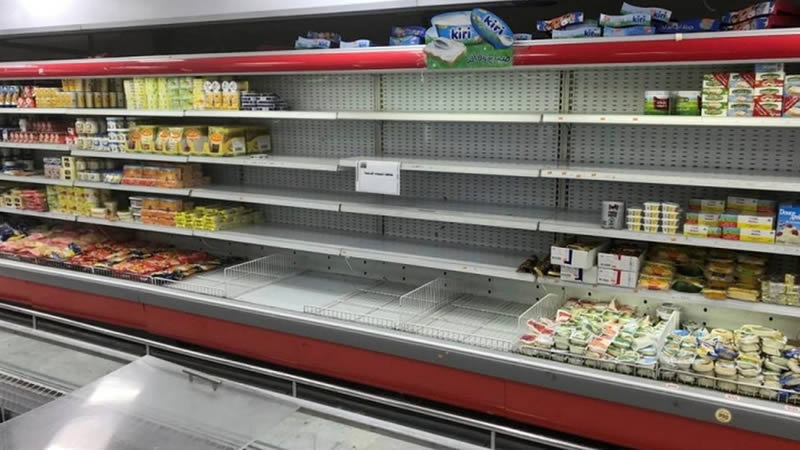October 2010 Headline inflation surprises on the downside: CPI (YoY) inflation was recorded at 15.33%, much lower than 16.38% consensus and our forecast of 16.05%. Headline inflation trailed estimates, due to the heartening decline in Food inflation, which was 118bps lower than September 2010. Furthermore, the CPI index registered a subdued 0.62% MoM increase, which is significantly lower when compared against prior MoM increments FYTD.
Core inflation measures are steady: Core Trimmed and Core NFNE inflation were recorded at 12.8% (discussion with SBP officials revealed it is not 18% as quoted by FBS) and 9.3% respectively. The latter is at a 31-month low, which reflects a broad based slowdown in demand pressures FYTD, while the former has shown some rigidity. This demonstrates the effectiveness of monetary policy to some extent and lends credibility to SBP’s resolve to maintain price stability.
November Monetary Policy Decision- Status quo likely: Demand side pressures will continue to emanate from an expansionary fiscal stance (at least until IMF’s recommended fiscal reforms are implemented post December 2010). However, an imminent restoration of local supply lines and a temporary slowdown in demand following Eid should help dampen food inflation and restrain inflationary expectations. This will allow the Central Bank some room, and leads us to believe that after increasing Discount Rate (DR) by 100bps in 2010, the upcoming Monetary Policy Announcement could see SBP holding DR at 13.5%.
October 2010 Headline Inflation surprises on the downside
During October 2010 prices of perishable food items eased off sharply, which reduced overall food inflation by 118bps from its September 2010 level and helped decelerate YoY growth in CPI to 15.33%. However, higher YoY prices of certain food items such as pulses and sugar from non-perishables, petrol and diesel, as well as higher electricity tariff continued to drive CPI upwards. For 4MFY11 CPI (YoY) inflation stands at 14.2% (4MFY10 at 10.2%). MoM trends on the other hand, were also encouraging, as CPI grew marginally by 0.62%, owing to some upward pressure from prices of fuels and transport.
Core inflation measures are steady
Core NFNE inflation which settled at a lower rate of 9.3% (31-month low) hints at broad based slowdown in demand pressures FYTD, while Core Trimmed inflation recorded at 12.8% (not 18% as quoted by FBS) has demonstrated some resilience post floods. However, overall trends indicate that SBP’s decisions to hike DR in July and September 2010 might have actually helped dampen expectations of higher future inflation, and prevented food inflation from spilling into the core component (wage-price spiral). This demonstrates the effectiveness of monetary policy to some extent and lends credibility to SBP’s resolve to maintain price stability.
November Monetary Policy- Status quo likely
Demand side pressures will continue to emanate from an expansionary fiscal stance (at least until IMF’s recommended fiscal reforms are implemented post December 2010). However, an imminent restoration of local supply lines post-floods and a temporary slowdown in demand following Eid should help dampen food inflation over the next 2 months, and restrain inflationary expectations. This will allow the central bank some room, and leads us to believe that after increasing Discount Rate (DR) by 100bps in 2010, the upcoming Monetary Policy Announcement could see SBP holding DR at 13.5%.
Economic & Political News
July-October remittances rise over 13% to USD3.5bn
Remittances sent home by overseas Pakistanis continued to show a rising trend as an amount of USD3,501.4mn was received in the 4MFY11, showing an increase of USD411.6mn or 13.3% over the same period the last fiscal year. In October 2010, an amount of USD855.1mn was sent home by overseas Pakistanis, up 12.8% or USD96.8mn, as compared to USD758.3mn received in the same month last year. The monthly average remittances for the July-October 2010 period comes out to USD875.4mn as compared to USD772.5mn during the same period of the last fiscal year, registering an increase of 13.3%.
Trade gap narrows by 11%
The balance of trade decelerates more than 11% in October as imports become costlier due to imposition of regulatory duties and devaluation of rupee, suggests data of federal bureau of statistics issued. Official figures released by FBS showed that trade deficit dipped to USD1.23bn in October this year from USD1.394bn over same month last year, showing a decline of 11.7%. For the 4MFY11, the trade deficit rose by 11.9% in to USD5.43bn over the same period last year. Imports recorded a paltry growth of 8.4% as it stood at USD3.22bn in October as against USD2.97bn of last year. However, the overall volume of imports witnessed a growth of 16.02% in 4MFY11 as it reached USD12.24bn against USD10.56bn over the same months last year. Meanwhile, exports of commodities surged by 26.1% to USD1.99bn in October, 2010 as against USD1.58bn over the same month last year. A growth of 19.17% was witnessed in 4MFY11 as it stood at USD7.17bn against USD6.01bn earlier.
Analyst Certification:
The research analyst(s) denoted AC on the cover of this report, primarily involved in the preparation of this report, certifies that (1) the views expressed in this report accurately reflect his/her personal views about all of the subject companies/securities and (2) no part of his/her compensation was, is or will be directly or indirectly related to the specific recommendations or views expressed in this report.
Disclaimer
The report has been prepared by Elixir Securities Pakistan (Pvt.) Ltd and is for information purpose only. The information and opinions contained herein have been compiled or arrived at based upon information obtained from sources, believed to be reliable and in good faith. Such information has not been independently verified and no guaranty, representation or warranty, expressed or implied is made as to its accuracy, completeness or correctness. All such information and opinions are subject to change without notice. Descriptions of any company or companies or their securities mentioned herein are not intended to be complete and this document is not, and should not be construed as, an offer, or solicitation of an offer, to buy or sell any securities or other financial instruments.
Research Dissemination Policy
Elixir Securities Pakistan (Pvt.) Ltd. endeavors to make all reasonable efforts to disseminate research to all eligible clients in a timely manner through either physical or electronic distribution such as mail, fax and/or email. Nevertheless, not all clients may receive the material at the same time.
Company Specific Disclosures
Elixir Securities Pakistan (Pvt.) Ltd. may, to the extent permissible by applicable law or regulation, use the above material, conclusions, research or analysis in which they are based before the material is disseminated to their customers. Elixir Securities Pakistan (Pvt.) Ltd., their respective directors, officers, representatives, employees and/or related persons may have a long or short position in any of the securities or other financial instruments mentioned or issuers described herein at any time and may make a purchase and/or sale, or offer to make a purchase and/or sale of any such securities or other financial instruments from time to time in the open market or otherwise. Elixir Securities Pakistan (Pvt.) Ltd. may make markets in securities or other financial instruments described in this publication, in securities of issuers described herein or in securities underlying or related to such securities. Elixir Securities Pakistan (Pvt.) Ltd. may have recently underwritten the securities of an issuer mentioned herein.
Other Important Disclosures
Foreign currency denominated securities is subject to exchange rate fluctuations which could have an adverse effect on their value or price, or the income derived from them. In addition, investors in securities such as ADRs, the values of which are influenced by foreign currencies effectively assume currency risk. Foreign currency denominated securities is subject to exchange rate fluctuations which could have an adverse effect on their value or price, or the income derived from them. In addition, investors in securities such as ADRs, the values of which are influenced by foreign currencies effectively assume currency risk.
Contributed By












